Exploring the delectable world of Durga Puja bhog
Durga Puja, the celebration of goddess Durga's triumph over the demon king Mahishasura, is perhaps the biggest religious and cultural festival for Hindus in Bangladesh, West Bengal, and some other parts of Eastern India.
In addition to the rituals, decorations, shopping, and exploring the puja pandals, a large portion of the celebration revolves around the special food served during puja, commonly known as bhog.
So, what is the true essence of bhog, and why is it so delicious -- in an attempt to feed this curiosity, the investigative mind set out to find answers.
The journey led to many sources and eventually to Kaniska Chakraborty, a connoisseur of culinary delights, and Lekha Ghosh, a homemaker and matriarch who has been closely associated with the preparation of puja delicacies for many years.
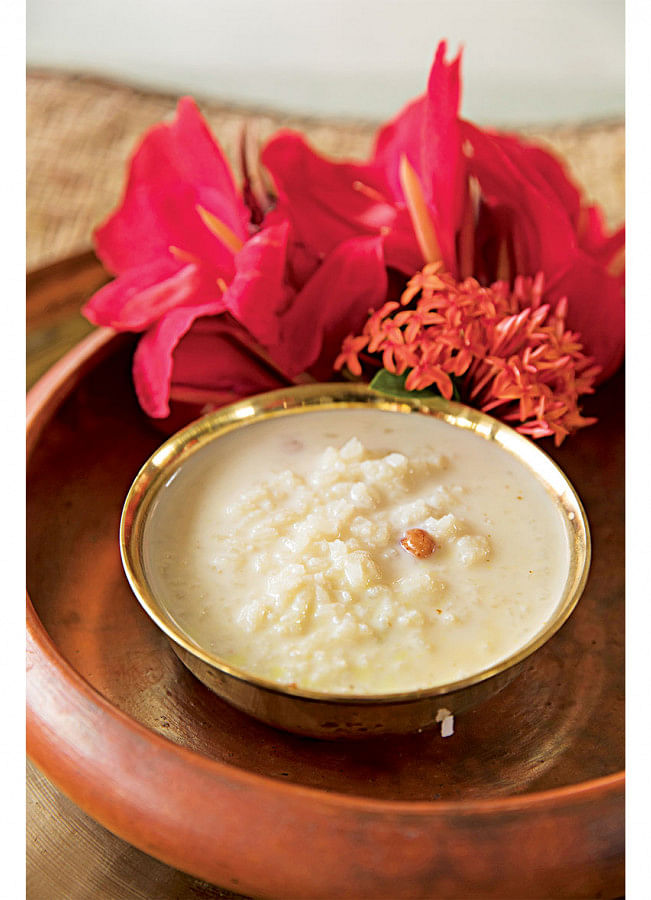
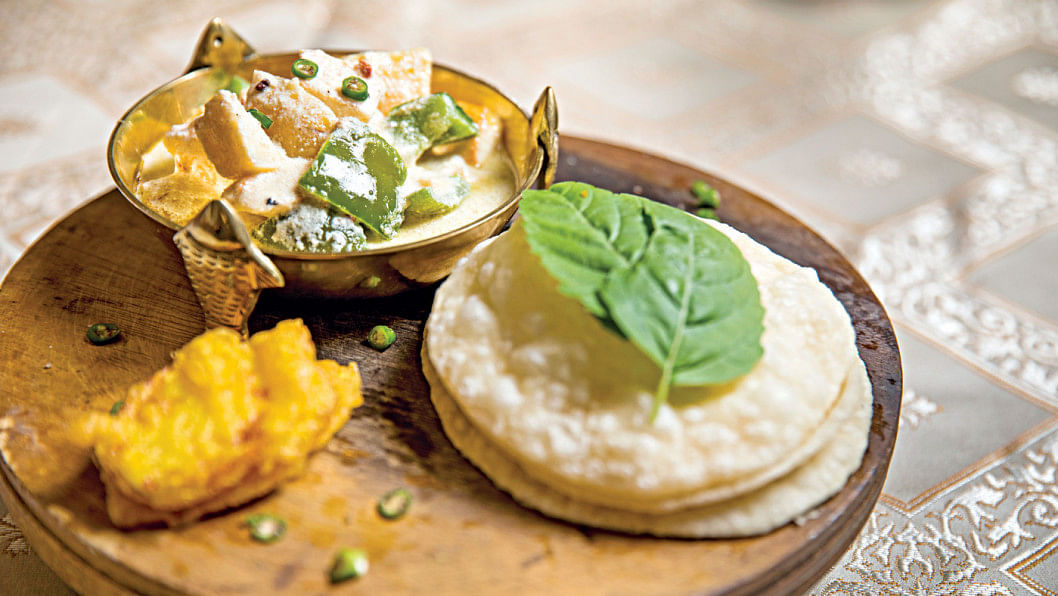
UNVEILING THE ESSENCE OF BHOG
Durga is seen as both a "devi" and a daughter, who, during the puja, arrives to her paternal home (earth) from her husband's.
Mahalaya marks the beginning of her journey from Kailash, the abode of Lord Shiva.
Awaiting her arrival, temples and mandaps are adorned with gorgeous decorations, and preparations are in full swing to receive her.
The goddess arrives with all four of her children -- Kartikeya, Ganesha, Lakshmi, and Saraswati -- on the end of Panchami (the fifth day), commencing the festivities on "Shashti Tithi" (sixth day of her journey).
Traditionally, puja bhog has two purposes -- an offering to the goddess and a big feast for everyone.
"The bhog offered to the goddess is not the same one cooked in bulk for the rest of the community. The bhog for the offering is prepared separately in a much smaller quantity and distributed among the attendees as prasad after the rituals for the day are completed," says Lekha Ghosh.
While delicious bhog staples, like fruits, sandesh, khichuri, and bhaja, are common to most, there is much more to the puja platter than meets the eye.
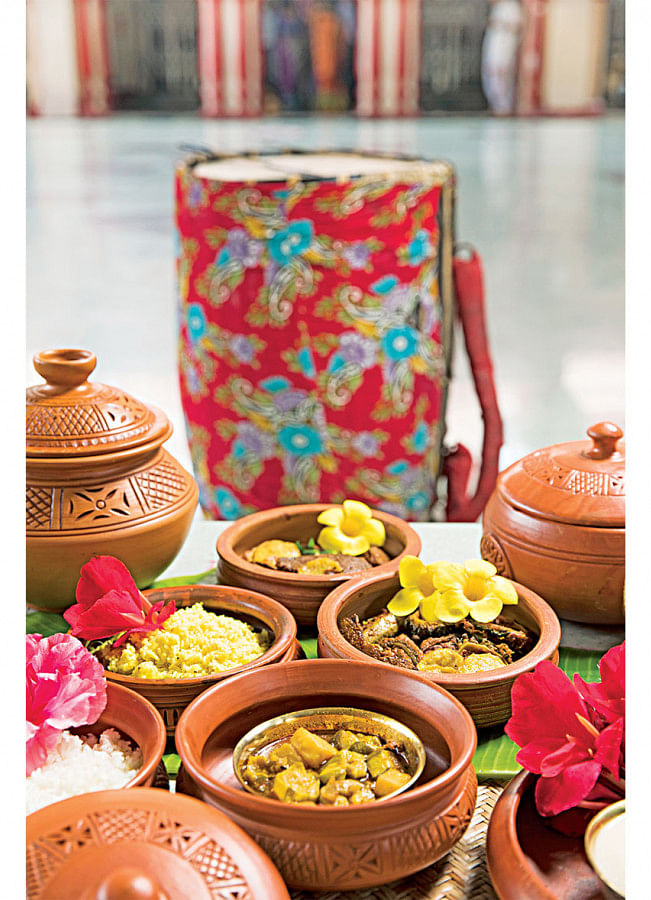
BHOG'S NOSTALGIC CHARMS
"Going back in memory, naru was something that was made individually in households. My Didima (grandmother) used to make sandesh in various shapes using her special moulds," recounted Kaniska.
However, the unique semolina halwa used to be the most special for him, he mentioned.
"The semolina, after being roasted for a long time, used to radiate a rich fragrance while its taste was also enhanced. Contrary to conventional halwas, this dessert was runnier and tasted amazing when served with luchi," he added.
The runny, slurpy, and deep-fried texture of vegetables compliments a comforting plate of khichuri, creating a wholesome moment. A niramish thali will typically have khichuri, a range of assorted fritters locally known as "bhaja" and a mixed vegetable curry known as "labra". A bit of chutney and some payesh or kheer as dessert further enrich the experience.
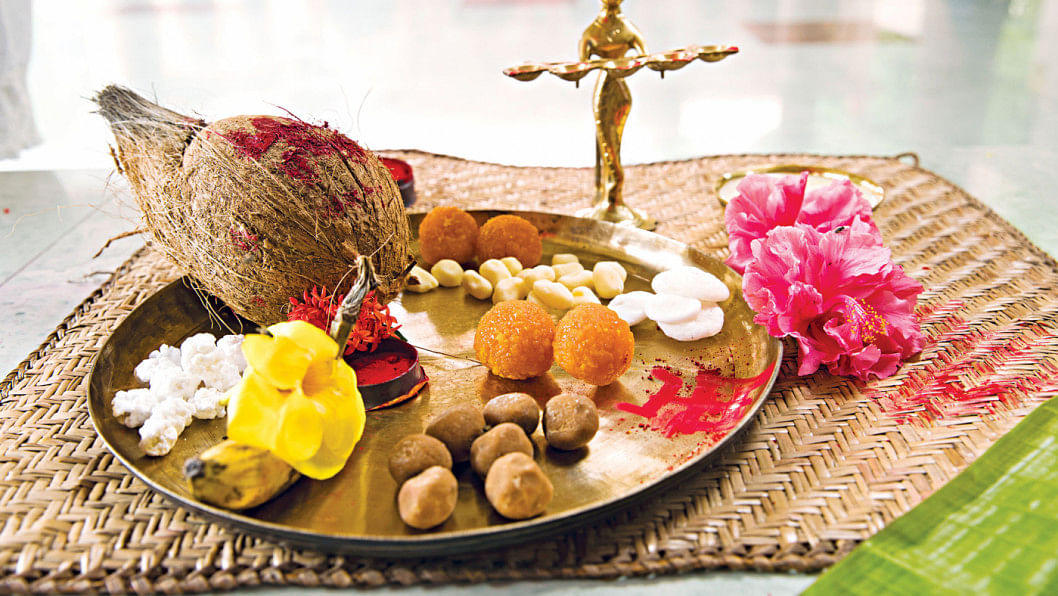
THE PUJA SNACKS SELECTION
Since Durga Puja is mainly organised in communities, each neighbourhood is seen to bring its own twist and specialty to the table. So, the bhog differs from one community to another.
On the lighter side of things, we have "fol bhog," or fruits, most commonly apples, pomegranate, bananas, and coconuts, which are offered on each day from Ashtami to Dashami. This is offered to Durga before being distributed among the people.
This festival also brings back a number of traditional Bangalee snacks that are rare to come across these days, like murir moa, chirar moa, khoi, mishti goja, khaja, kucho nimki, and mochar chop.
THE CULINARY GRANDEUR
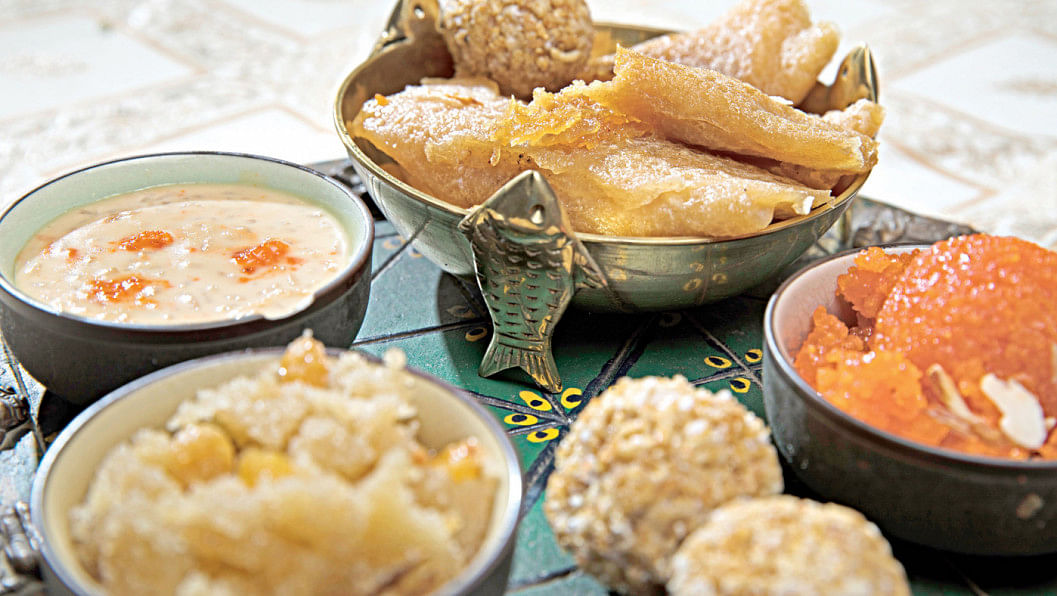
Puja bhog has always been a visual treat. Each item on the big platter brings a distinguished flavour that eventually helps decorate a picturesque thali.
Starting with breakfast, the puja vibe is felt at every meal of the day.
A traditional bhog served at home is an irresistible assembly of our favourite Bangalee vegetarian delicacies, free of onion, garlic, fish, or any meat.
For households, the family feasts start with light meals till Shaptami and gradually take on a grander form during Ashtami and Navami.
On Shaptami, the feast is a prelude to the celebrations with special elements infused into regular meals, like a touch of ghee or an extra dash of Bangalee five-spice mix -- paanch phoron. On Ashtami, the feast becomes richer as more items make their way to the menu.
While there is no doubt that luchi with alur dom is an ageless combination, many also arrange luchi with chholar dal, chanar dalna, or vegetable chop for breakfast on a puja morning, paired with a perfect cup of tea, to begin the day.
The runny, slurpy, and deep-fried texture of vegetables compliments a comforting plate of khichuri, creating a wholesome moment. A niramish thali will typically have khichuri, a range of assorted fritters locally known as "bhaja" and a mixed vegetable curry known as "labra". A bit of chutney and some payesh or kheer as dessert further enrich the experience.
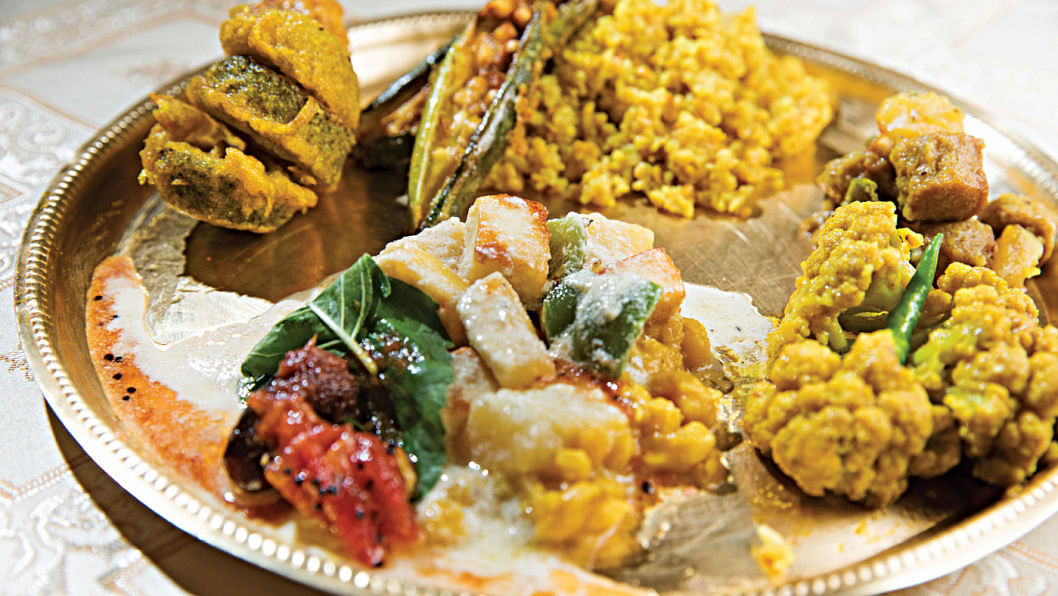
The most surprising fact about a "niramish" puja thali is the extent to which simple vegetables can turn into an extraordinary meal. The items can be easily expanded, and possibilities are endless with Bangalee recipes like alu posto, potol posto, achari begun, shukto, daal tarka, alu jhuri bhaja, mochar chop, and dudh phulkopi.
The festivities on households in recent times have taken on a more diverse and delicious twist, with local delicacies like shorshe ilish, dudh ilish, kosha mangsho, fish cutlet, and chingri posto becoming a part of the dining table during the occasion.
On Dashami, a traditional meal would consist of panta bhaat, bhaja, shaak, and khoi or muri.
"Devi Durga, the daughter, has to go a long way back to Kailash. So the meal before her departure should not be too heavy," said Kaniska Charkaborty.
IRRESISTIBLE DESSERTS
Lastly, coming to desserts, semolina halwa, kheer, and gurer payesh are among the top favourites of Puja sweets. There are multiple other pithas, like pitha, narkel puli, and patishapta, that warm the heart by leaving a sweet taste at the end of each meal.
However, for those looking for an exceptional delicacy, chandra puli is the showstopper. The half-moon shaped puli, filled with a concoction of sugar, coconut, and sometimes jaggery, bursts with flavour with the first bite.
Speaking of puja desserts, one can never skip dudh chitoi pitha, a regional delicacy of the country. Freshly made chitoi pitha, soaked in a rich milk-base gravy, enriched with coconut and jaggery, tastes heavenly as soon as one digs into it.
Alongside the traditional ones, modern desserts like fruit custard have also managed to book a spot on the puja menu.
What lifts Durga Puja above merely religious devotion is the bubbling happiness of social and familial ties. The soul of this festival can be found in the moments of laughter, companionship, and shared experiences.
The genuine feast is not just limited to the dining table; rather, it is in the relationships that are built, the friendships that are restored, and the memories that are made as we savour the delicacies.

 For all latest news, follow The Daily Star's Google News channel.
For all latest news, follow The Daily Star's Google News channel. 



Comments